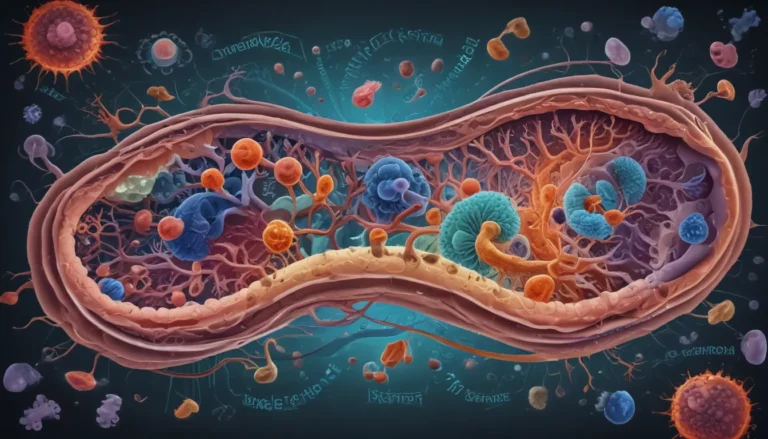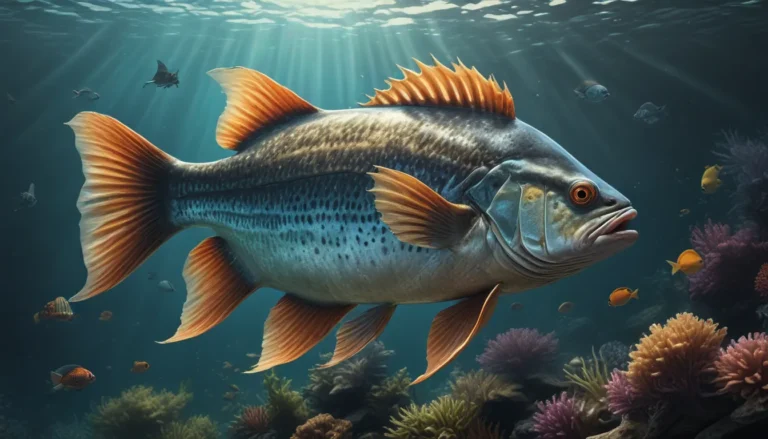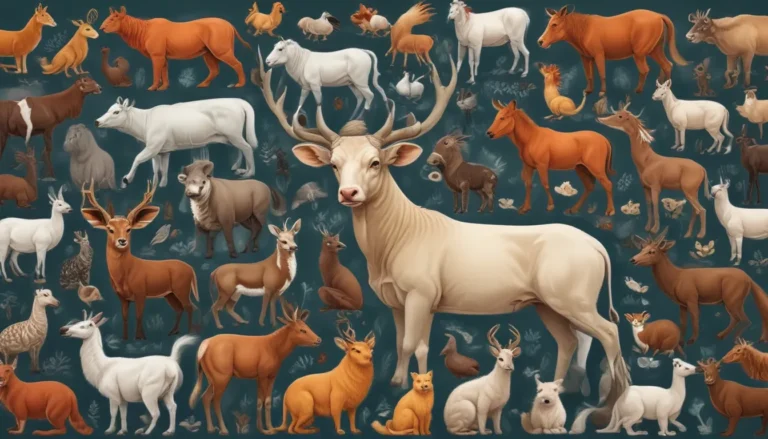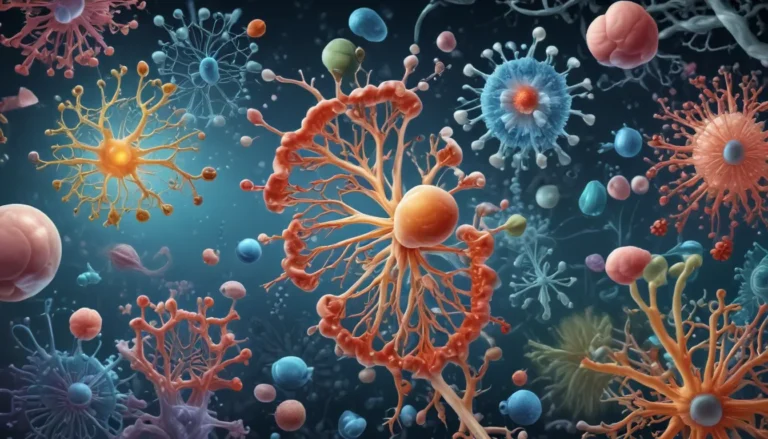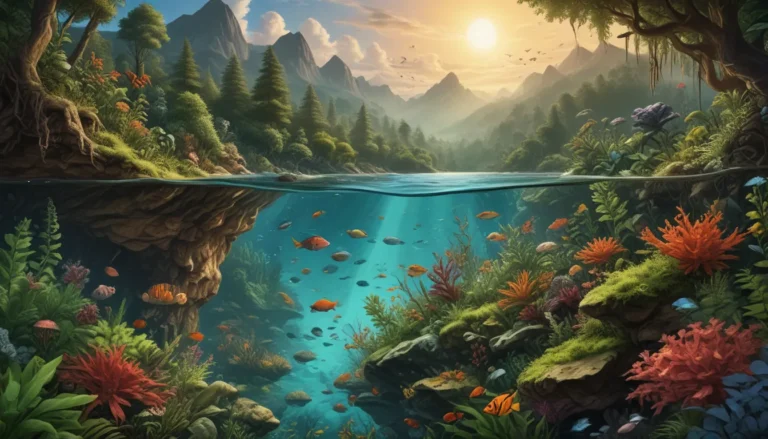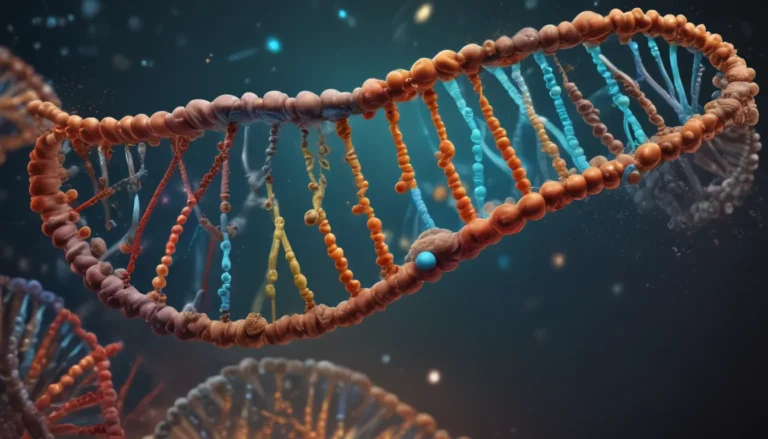A Note About Images: The images used in our articles are for illustration purposes only and may not exactly match the content. They are meant to engage readers, but the text should be relied upon for accurate information.
Evolutionary ecology is a captivating field that bridges the gap between evolution and ecology, shedding light on how organisms interact with their environment and evolve over time. By exploring the intricate relationships between species and their surroundings, evolutionary ecology unveils the complex web of life on our planet. In this article, we will delve into 16 mind-blowing facts about evolutionary ecology that will broaden your understanding of how biodiversity arises and thrives. From incredible adaptations to the impact of human activities, these facts will showcase the wonders of nature and the remarkable processes that have shaped the natural world as we know it. So, buckle up and get ready to explore the captivating world of evolutionary ecology!
Key Takeaways:
- Evolutionary ecology studies how animals and plants change to survive in their environment, akin to nature’s survival game.
- Evolutionary ecology helps us grasp how human actions impact the natural world, offering insights into the future of life on Earth based on our current actions.
Evolutionary Ecology: Understanding Organism-Environment Interactions
Evolutionary ecology delves into the evolution and adaptation of species in response to environmental stimuli such as temperature changes, food availability, and resource competition. By unraveling the mechanisms behind these adaptations, evolutionary ecology deciphers their implications on the survival and reproduction of organisms.
The Role of Natural Selection in Evolutionary Ecology
Natural selection, a cornerstone concept introduced by Charles Darwin, is a pivotal force in evolutionary ecology. This process dictates that individuals with beneficial traits are more likely to survive and reproduce, passing on these traits to future generations. Natural selection plays a crucial role in shaping population characteristics over time.
Unveiling the Evolutionary Arms Race Phenomenon
The concept of an evolutionary arms race portrays the ongoing competition between species as they develop adaptations to outcompete each other. This dynamic interaction often leads to the co-evolution of predator and prey, each evolving strategies to gain an advantage in the perpetual battle for survival.
Delving Into the Origins of Biodiversity
Studying how species have diversified and adapted to various environments, evolutionary ecology unveils insights into the origins of the diverse array of life forms on Earth. This knowledge is pivotal for conservation efforts and managing ecosystems in the face of environmental changes.
Behavior’s Role in Adaptation Explored
Behavioral adaptations are integral to an organism’s survival and reproduction. Evolutionary ecology examines how behaviors such as mating rituals, foraging strategies, and predator avoidance have evolved over time, shaping ecological dynamics within populations and communities.
Investigating Gene Flow’s Impact on Species Divergence
Gene flow, the exchange of genetic information between populations, can either facilitate or hinder species divergence. Evolutionary ecologists study how gene flow influences population genetics and how barriers to gene flow lead to the emergence of distinct species.
Climate Change’s Influence on Species Interactions
Understanding how species respond and adapt to changing environmental conditions is crucial in the face of climate change. Evolutionary ecology investigates how climate change impacts species interactions, leading to shifts in phenology, altered distribution patterns, and disrupted ecological relationships.
Unveiling Reproductive Strategy Evolution
The evolution of reproductive strategies, from monogamy to polygamy, is a fascinating area of study in evolutionary ecology. By exploring different mating systems and reproductive behaviors, scientists gain insights into the factors shaping these strategies and their impact on reproductive success.
The Role of Symbiotic Relationships in Ecosystems
Symbiotic relationships, such as mutualism and parasitism, significantly influence ecosystem functioning. Evolutionary ecologists delve into the coevolutionary dynamics of these relationships to understand how they have shaped ecosystem structure and stability throughout history.
Human Activities’ Impact on Evolutionary Processes
Habitat destruction, pollution, and climate change stemming from human activities have profound effects on evolutionary processes. Evolutionary ecology aids in understanding the repercussions of these disruptions and offers insights into potential conservation strategies to mitigate negative impacts.
Exploring Niche Specialization
Niche specialization refers to how species adapt to specific ecological niches within their habitats. Evolutionary ecologists study how competition and resource availability drive niche specialization, contributing to ecosystem diversity and stability.
Phenotypic Plasticity’s Evolutionary Adaptations
Phenotypic plasticity enables organisms to alter their physical characteristics in response to environmental cues. Evolutionary ecologists investigate the adaptive significance of phenotypic plasticity and the genetic mechanisms underpinning flexible responses to changing conditions.
Analyzing Invasive Species’ Impact on Ecosystems
Invasive species pose a significant threat to native biodiversity and ecosystem functioning. Evolutionary ecology studies how invasive species interact with native species, how their evolutionary history influences their success, and how ecosystems can be managed to mitigate their detrimental effects.
Understanding Coevolution in Species Interactions
Coevolution entails reciprocal evolutionary changes between interacting species. Evolutionary ecologists untangle the complex web of coevolutionary interactions, such as predator-prey relationships and mutualistic partnerships, to comprehend how these interactions have shaped the biological world.
Shedding Light on Genetic Drift in Small Populations
Genetic drift involves random changes in gene frequencies in small populations. Evolutionary ecologists investigate how genetic drift influences evolutionary processes, including genetic diversity loss, inbreeding, and potential population divergence or speciation.
Predicting Future Ecological and Evolutionary Outcomes
By amalgamating empirical observations, theoretical models, and experimental studies, evolutionary ecology offers insights into the potential consequences of environmental changes on species adaptations and interactions. This comprehension aids in making informed decisions regarding conservation and ecosystem management.
Conclusion: Embracing the Complexity of Evolutionary Ecology
Evolutionary ecology stands as a captivating and ever-evolving discipline within biology, shedding light on the intricate interactions between organisms and their environments. From the co-evolution of species to the impact of human activities, evolutionary ecology serves as a beacon illuminating the complexities of the natural world.
By delving into the principles of natural selection, adaptation, and ecological interactions, scientists enrich their understanding of how species adapt and evolve over time. This knowledge informs conservation efforts, agricultural practices, and humanity’s place in the natural world.
As you journey into the realm of evolutionary ecology, whether as a biologist, student, or nature enthusiast, you are bound to expand your knowledge and kindle your curiosity about the astounding processes that shape life on Earth.
FAQs
-
What is evolutionary ecology?
Evolutionary ecology is a scientific discipline that studies how organisms interact with their environments, focusing on the evolution of species over time driven by these interactions. -
How does natural selection influence evolutionary ecology?
Natural selection, a foundational concept in evolutionary ecology, promotes the survival and reproduction of individuals with advantageous traits, leading to the accumulation of adaptations enhancing their fitness in specific environments. -
What are some examples of evolutionary ecology in action?
Examples include predator-prey coevolution, plant-pollinator adaptations, and species diversification on islands, showcasing how ecological interactions fuel evolutionary change. -
How does human activity impact evolutionary ecology?
Human activities such as habitat destruction, pollution, and climate change disrupt evolutionary processes, endangering species, altering ecosystems, and diminishing genetic diversity. -
What are the practical applications of evolutionary ecology?
Evolutionary ecology informs conservation biology, agriculture, and medicine by offering insights into species interactions and adaptations, aiding conservation efforts and enhancing agricultural practices and medical treatments.
Evolutionary ecology’s captivating insights only scratch the surface of this dynamic field. Uncover more intriguing facts about ecosystem dynamics shaping our planet, or explore the intricate tapestry of species interactions driving evolution. For those curious about life’s diversity, don’t miss our article on adaptive radiation and its role in crafting Earth’s magnificent array of organisms. Each exploration offers a unique glimpse into the ever-changing tapestry of life on our planet.
Was this page helpful?
Driven by our commitment to delivering trustworthy and engaging content, we strive to uphold the highest standards of accuracy and authenticity. Every fact shared on our site is contributed by real users, ensuring a wealth of diverse insights and information. Trust in our dedication to quality and authenticity as you embark on your journey of exploration and discovery with us.

